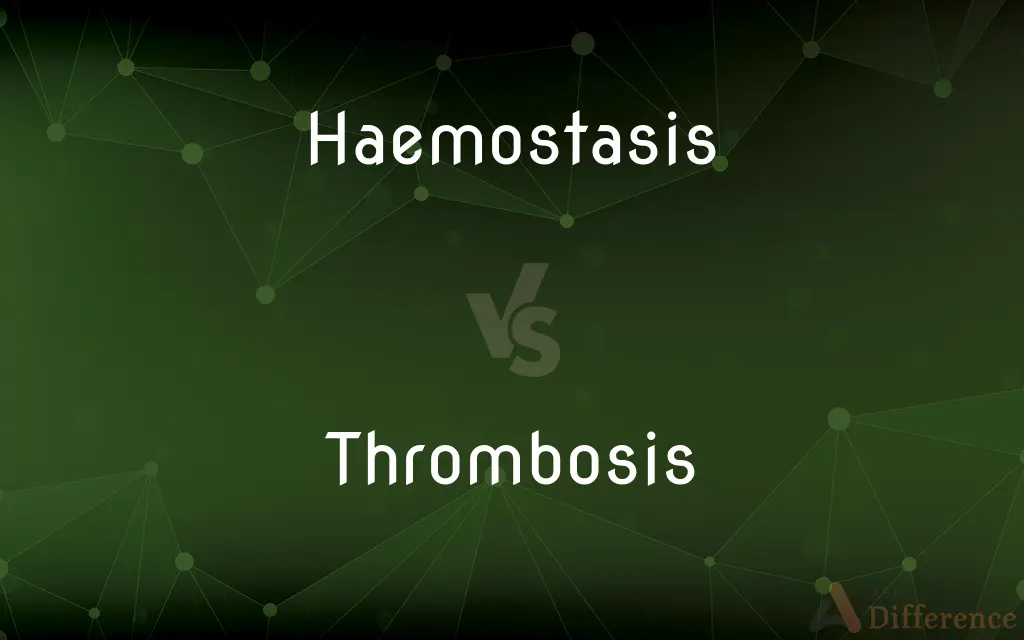Haemostasis vs. Thrombosis — What's the Difference?

Difference Between Haemostasis and Thrombosis
ADVERTISEMENT
Compare with Definitions
Haemostasis
(British spelling) hemostasis
Thrombosis
Thrombosis (from Ancient Greek θρόμβωσις thrómbōsis "clotting”) is the formation of a blood clot inside a blood vessel, obstructing the flow of blood through the circulatory system. When a blood vessel (a vein or an artery) is injured, the body uses platelets (thrombocytes) and fibrin to form a blood clot to prevent blood loss.
Haemostasis
Surgical procedure of stopping the flow of blood (as with a hemostat)
Thrombosis
The formation, presence, or development of a thrombus.
Thrombosis
(pathology) The formation of thrombi in the blood vessels of a living organism, causing obstruction of the circulation.
ADVERTISEMENT
Thrombosis
The obstruction of a blood vessel by a clot formed at the site of obstruction; - distinguished from embolism, which is produced by a clot or foreign body brought from a distance.
Thrombosis
The formation or presence of a thrombus (a clot of coagulated blood attached at the site of its formation) in a blood vessel
Share Your Discovery

Previous Comparison
Start vs. Begin
Next Comparison
Youth vs. Teenager















































